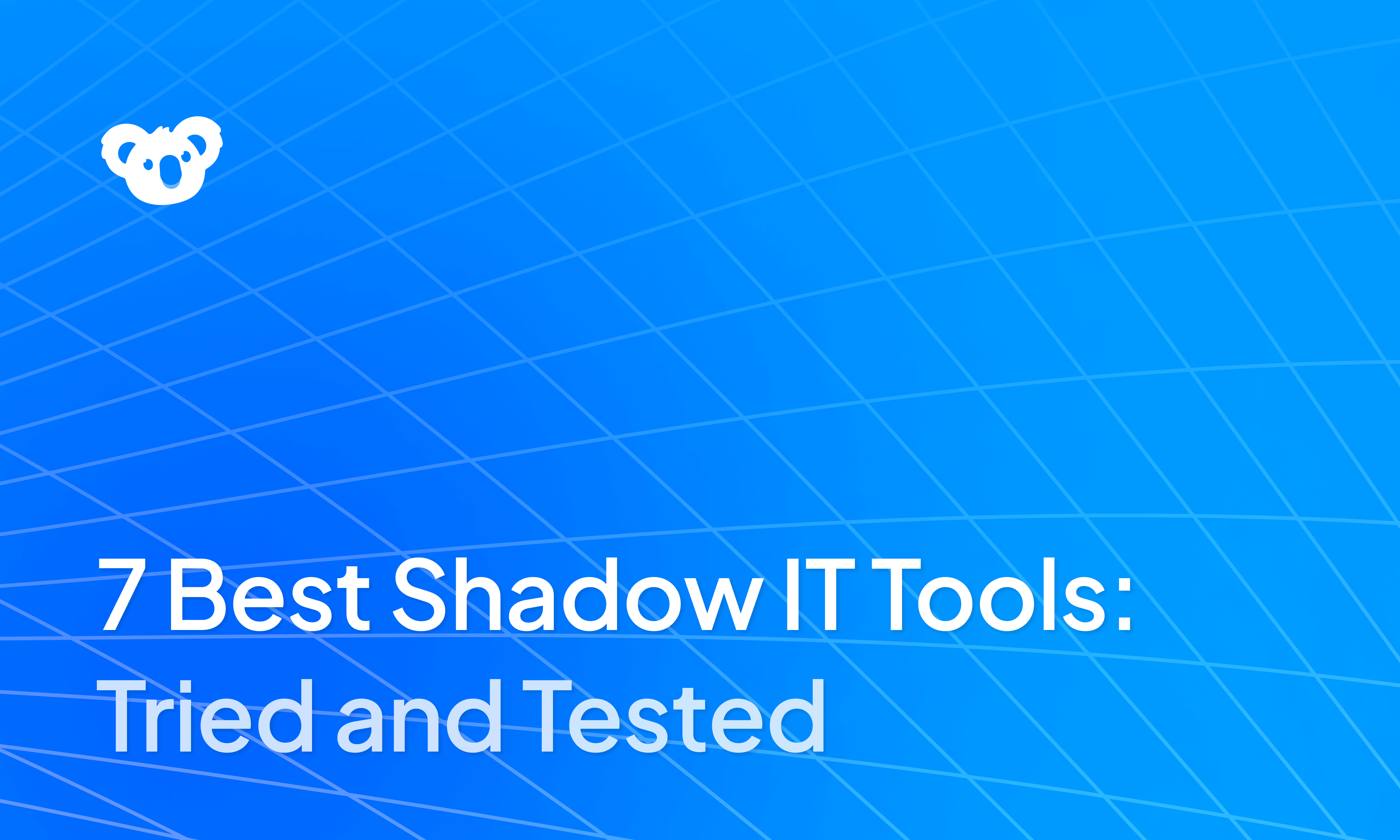


Enterprise teams are racing to adopt AI, but legacy approaches to internal application development create bottlenecks that slow innovation. Here's how governed AI platforms running on AWS are helping enterprises move from experimentation to production at scale.
The Enterprise AI Adoption Challenge
According to recent industry analysis, 80% of enterprises plan to adopt AI by 2026, with the AI market projected to reach $827 billion by 2030. Yet despite this momentum, many organizations struggle to move AI initiatives from prototype to production.
The bottleneck isn't the AI itself - it's the internal infrastructure required to operationalize AI at scale. Enterprise teams need secure dashboards, admin panels, approval workflows, and data management tools that integrate with AI systems while maintaining governance and compliance standards. Building these tools the traditional way takes months and consumes scarce engineering resources.
Why Internal Tooling Becomes the Constraint
Most enterprises face a common pattern: AI models are ready, data pipelines are established, but the internal applications needed to operationalize everything remain stuck in development backlogs. Senior engineers spend 60-80% of their time maintaining internal tools rather than innovating on core products.
Traditional approaches create several pain points:
Shadow IT/AI proliferation: Teams build quick solutions outside governance frameworks, creating security risks and technical debt.
Maintenance burden: Custom-built internal tools require ongoing engineering support, pulling resources from strategic initiatives.
Governance gaps: Rapid development often bypasses security reviews, compliance checks, and audit requirements.
Limited scalability: Point solutions don't scale as AI adoption grows across the organization.
The Governed AI Platform Approach
A new category of platforms is emerging that addresses these challenges by combining prompt-based development with enterprise governance. These platforms generate production-grade React code that integrates with enterprise systems while enforcing security standards and compliance policies from day one.
Running on AWS, these governed AI platforms leverage services like Amazon Bedrock for generative AI capabilities, Amazon SageMaker for ML workflows and AI model development, and AWS's unified data infrastructure to provide seamless integration with enterprise data sources.
Key Architectural Principles
Unified environment: Rather than fragmenting development across multiple tools, teams work in a single environment with access to data, code repositories, and compute resources.
Generated, not assembled: Applications are generated as clean React code rather than assembled from proprietary components, ensuring full code ownership and eliminating vendor lock-in.
Governance by default: Security policies, compliance controls, and audit logging are built into the development process rather than added as afterthoughts.
AWS-native integration: Deep integration with AWS services means applications can leverage Amazon Redshift for analytics, AWS Glue for data processing, and Amazon SageMaker for ML inference without custom integration work.
Real-World Impact: From Months to Hours
Organizations working with governed AI platforms on AWS are seeing dramatic acceleration in their ability to deploy AI-powered internal applications:
Development velocity: Teams build and ship production-ready internal tools in hours rather than weeks, enabling rapid experimentation and iteration.
Maintenance reduction: Clean, standards-compliant code reduces technical debt by 80%, freeing senior engineers to focus on innovation.
Governance at scale: Centralized policy enforcement ensures all applications meet security and compliance requirements without manual reviews.
AWS service adoption: Simplified integration accelerates adoption of AWS data and AI services across the organization.
Alignment with AWS's Unified Data Strategy
The next generation of Amazon SageMaker represents a complete rethinking of the enterprise data and AI stack. By unifying SQL analytics, data processing, ML development, and generative AI in a single governed environment, AWS has created what enterprises have been asking for: one platform for all data and AI work.
The Complete Stack: Infrastructure + Applications
Think of the modern enterprise data and AI architecture in layers:
Foundation Layer (Lakehouse): Data lives in Amazon S3, organized and governed through a unified catalog.
Governance Layer: Policies, access controls, and compliance rules apply consistently across all data and AI operations.
Capability Layer (Unified Studio): Teams access SQL analytics (Amazon Redshift, Athena), data processing (AWS Glue, EMR), ML development (Amazon SageMaker AI), and generative AI (Amazon Bedrock)—all through one interface.
Application Layer: This is where governed AI platforms come in. While Unified Studio provides the infrastructure and development environment, enterprises still need to build the applications that end users interact with—dashboards for monitoring ML models, admin panels for managing data access, approval workflows for sensitive operations, and interfaces for AI-powered features.
Better Together: The Unified Experience
Here's why this matters: when both your infrastructure and your applications share the same governance framework, you eliminate the gaps that create security risks and compliance headaches.
Applications built on top of SageMaker Unified Studio inherit the same governance policies. A data access rule you set in AWS Glue Data Catalog applies both when a data scientist queries the data in a notebook and when a business user views it in an application dashboard. IAM roles, VPC configurations, audit logs—all unified.
The result is a complete enterprise data and AI platform where:
- Data engineers prepare data using AWS Glue
- ML engineers train models in Amazon SageMaker
- Applications operationalize those models for end users
- Everything respects the same governance rules
No integration work. No parallel security models. No governance gaps. Just a unified platform from raw data to production applications.
Building for Enterprise Reality
The most successful implementations share common characteristics:
Start with governance: Rather than retrofitting security and compliance, teams establish governance frameworks before building applications.
Leverage existing AWS investments: Platforms that integrate with Amazon Redshift, Amazon Athena, AWS Glue, and other services provide faster time-to-value.
Empower semi-technical users: With proper guardrails, operations teams and business analysts can build applications without full-stack engineering expertise.
Plan for scale: Architecture decisions made early-like using AWS VPC deployment and IAM integration-prevent painful migrations later.
The Path Forward
As enterprises accelerate AI adoption, the internal tooling challenge will only intensify. Organizations need approaches that provide both speed and control: the ability to move quickly while maintaining enterprise standards.
Governed AI platforms running on AWS offer a path forward by:
- Generating production-grade code rather than prototypes
- Enforcing governance by default rather than as an afterthought
- Integrating deeply with AWS services rather than creating data silos
- Providing full code ownership rather than creating vendor lock-in
For organizations attending AWS re:Invent 2025, this represents an opportunity to explore how governed AI platforms can accelerate their internal tooling strategy while maintaining the security and compliance standards required by modern enterprises.
See Superblocks at AWS re:Invent 2025
Visit booth 1328, December 1-5, 2025, The Venetian, Las Vegas
#AWSReinvent
#AWSPartners
CLICK HERE to book a meeting and see how walk away with an AI-generated app tailored to your business use case.
About Superblocks
Superblocks is a governed AI platform running on AWS that turns prompts into production-grade internal applications. Built for engineering teams, Superblocks generates clean React code that integrates with AWS services, applies enterprise design and security standards, and enforces governance from day one. Organizations use Superblocks to build admin panels, dashboards, approval workflows, and data tools 5x faster while reducing maintenance burden by 80%.
Learn more at superblocks.com
This content focuses on educating enterprise teams about the governed AI platform approach for internal tooling development. Superblocks runs on AWS and supports integration with Amazon Bedrock, Amazon SageMaker, Amazon Redshift, AWS Glue, Amazon Athena, and other AWS services.
Stay tuned for updates
Get the latest Superblocks news and internal tooling market insights.
You've successfully signed up
Request early access
Step 1 of 2
Request early access
Step 2 of 2
You’ve been added to the waitlist!
Book a demo to skip the waitlist
Thank you for your interest!
A member of our team will be in touch soon to schedule a demo.
Table of Contents






